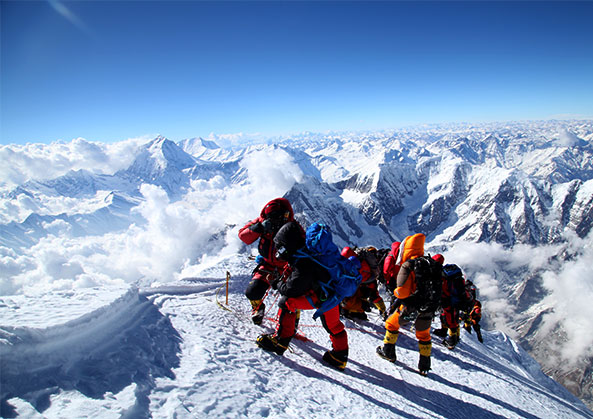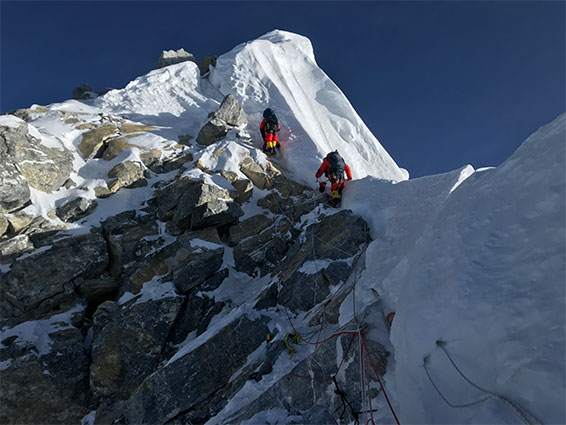Dhaulagiri Expedition
Dhaulagiri is the seventh-highest mountain in the world, lying approximately 8,167 meters above sea level. Dhaulagiri is derived from the Sanskrit word “Dhawala and Giri, “meaning “The Great White Mountain”. It is one of the most interesting climbed mountains among 14 eight thousand meters, with five ridges plus south and west faces. All the summit routes are challenging, and only experienced veterans are interested in climbing this mountain. The Swiss /Austrian Mountaineers team led by Kurt Diemberger first reached the top of Mt. Dhaulagiri on 13th May 1960.
The Northeast route is the easiest, also known as “the normal” climbing route. We set up our base camp at an elevation of 4,759 meters and another three higher centres at 5,850m, 6,400m and 7,400m, respectively, for the summit attempt.
Facts: Dhaulagiri used to be considered a stiff peak to climb. The death rate is slowly going down comparatively. The regular route on the peak has some short technical sections and some avalanche danger, but overall it’s a
straightforward climb.





